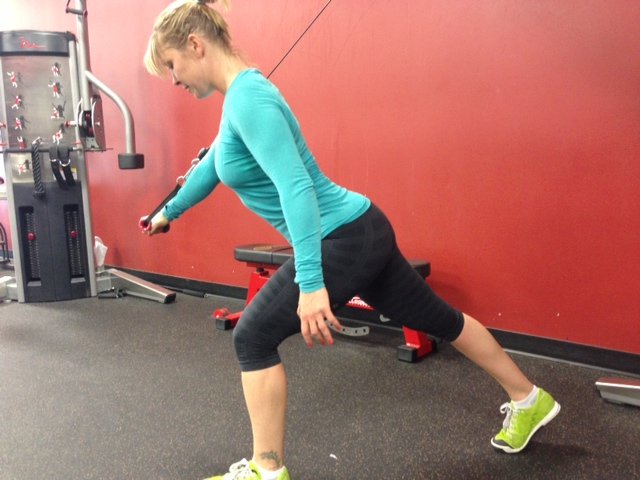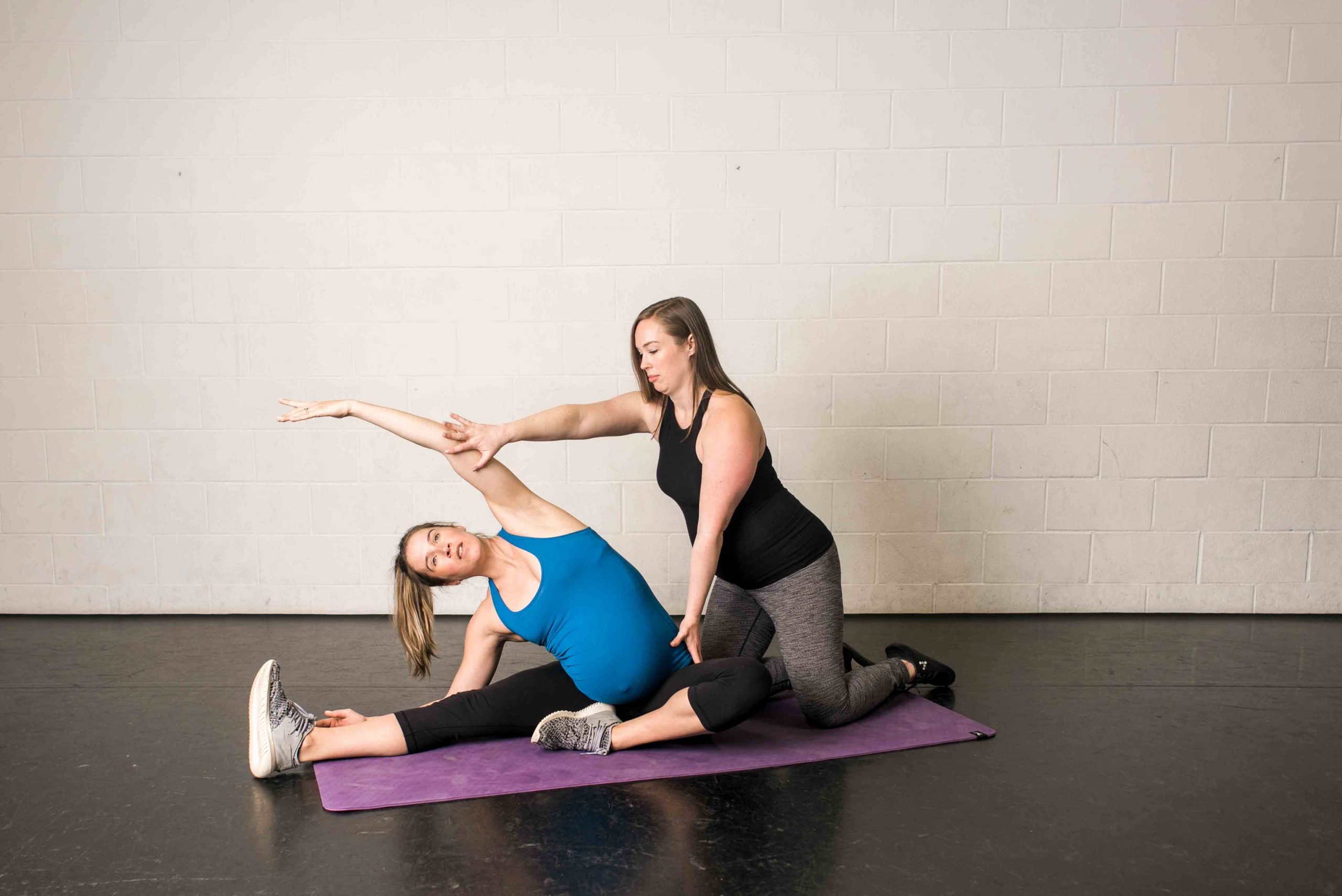“Ribs over hips” is something my clients get reallllly sick of hearing me say 😉
This is a cue I use a ton, especially with my pre/postnatal gals, which I’ve borrowed from Julie Wiebe. It has helped ME tremendously in my own alignment and in communicating with my clients how their bodies should feel in their exercises.
The Basics of Ribs Over Hips
We need our ribcage to be stacked over the pelvis in order to be in good alignment, and thus, for our core to work optimally.
Think of your trunk as a bell. If the bell is sitting still, as in your ribcage stacked over the hips, the bell is quiet. If the bell is rung up (your ribcage flaring up and back), or if the bell is rung down (your ribcage rounded down), you’ll have a noisy bell.
Think about this noise as pelvic floor issues, incontinence, back aches/pains, diastasis recti, a pouchy belly, etc.
For our purposes, here’s what the “bell” is made up of:
• The top of the bell is the diaphragm = the muscle at the bottom of your lungs, sitting in the lower part of ribcage.
• The body of the bell is your transverse abdominis = your deepest layer of abdominal muscle. Plus, the multifudus = the muscles surrounding your spine.
• The bottom of the bell are the pelvic floor muscles = the domes of muscles supporting our pelvis and pelvic organs.
We want a quiet bell, where all those muscles are working in balance. Teamwork!
What do you need to do in order to get your ribcage stacked over your pelvis?
Let’s talk about the most common scenario I see, which is the bum tucked under, in “mom posture”. The hips are pushed forwards and the ribcage is leaning backwards. Makes sense, doesn’t it? This is the path of least resistance ( = easiest muscularly) to holding babies on your front.
What this does though is unstacks our ribcage, so it’s no where on top of our pelvis, and vice versa. Our chances of core stability (and a flatter tummy) go way down. Our chances of back pain and incontinence go way up. Which do you want…?!
What’s your action to getting your ribs over hips, then?
If you’re a bum tucker and pelvis driver-forwarder (technical stuff, ya know?), you need to think about shifting your bum backwards. If your ribcage has been hanging back behind you, you need to think about shifting your ribcage and upper body forwards slightly at the same time as you move your bum back.
Ribs over hips in exercise action:
Photo #1: This is my client Heather performing a 1-Arm Cable Chest Press. Great form. Ribs over hips. Nice little arch in the lower back. Glutes are rock solid. This is her normal alignment!
Photo #2: No joke, she had back pain following this because I made her show crappy form in the photo below. She also said, “this hurts my belly button!”. If you have a diastasis recti, just imagine what is happening to that separation and connective tissue if your belly is always “hangin” out like this!
Practice, practice, practice. Get your ribs over your hips. Especially if you’re healing an abdominal separation! And, remember, we need to do this in our everyday activities, just as much as we do in our exercises.
JMG







